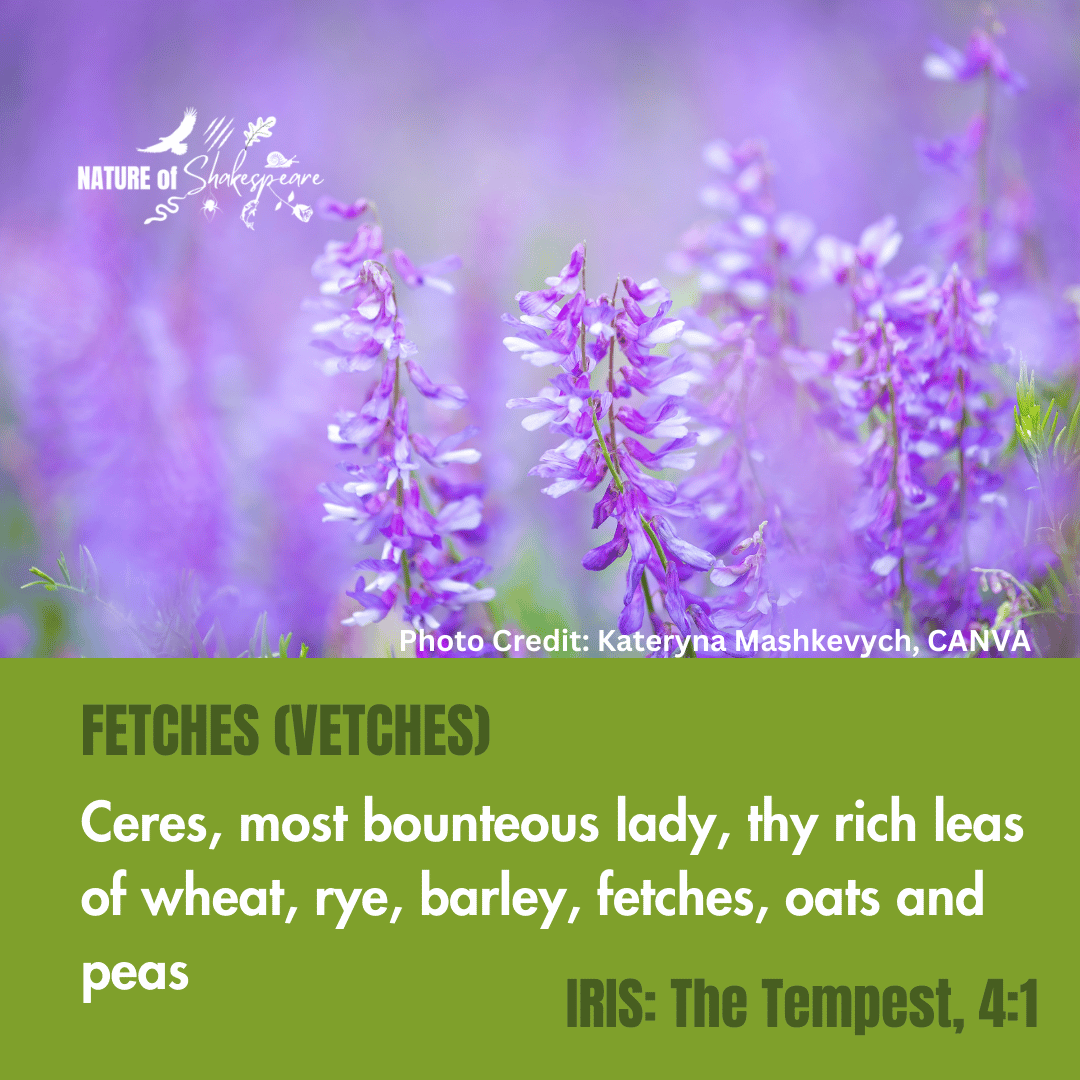
FETCHES (VETCHES)
Fetches (Vetches): Ceres, most bounteous lady, thy rich leas of wheat, rye, barley, fetches, oats and peas. There is debate about which Vetch is intended (Broadbean or Garden Vetch or Tufted Vetch).
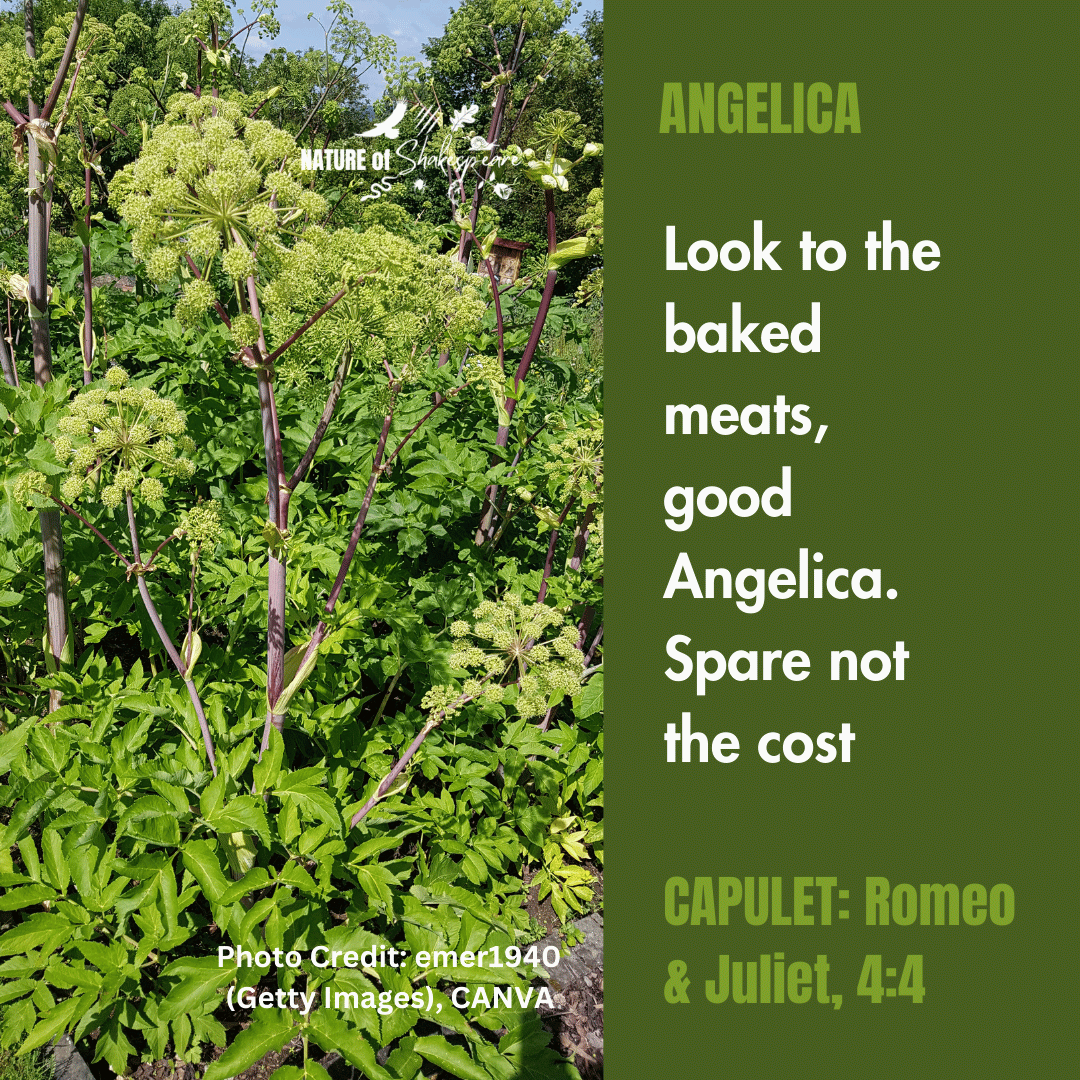
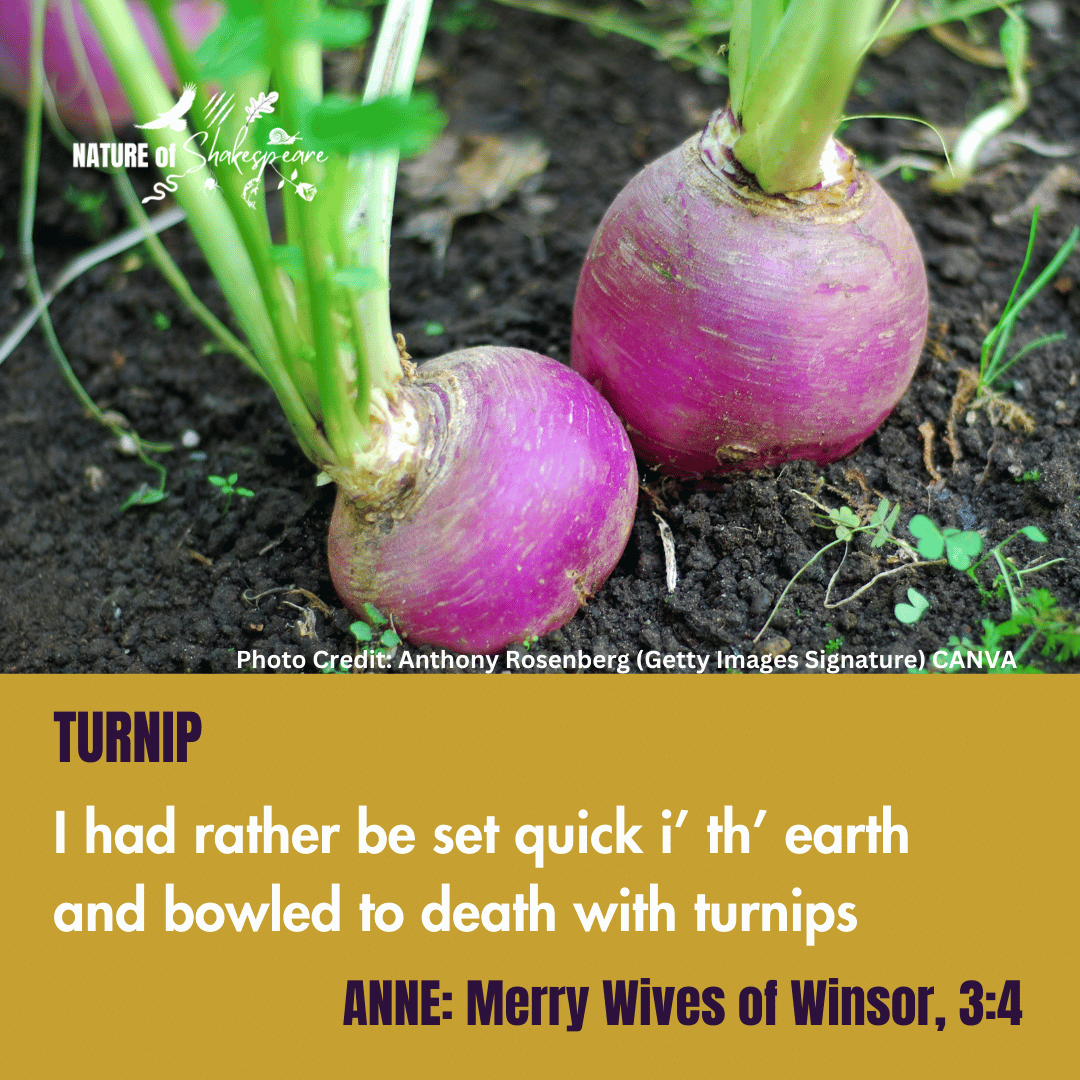
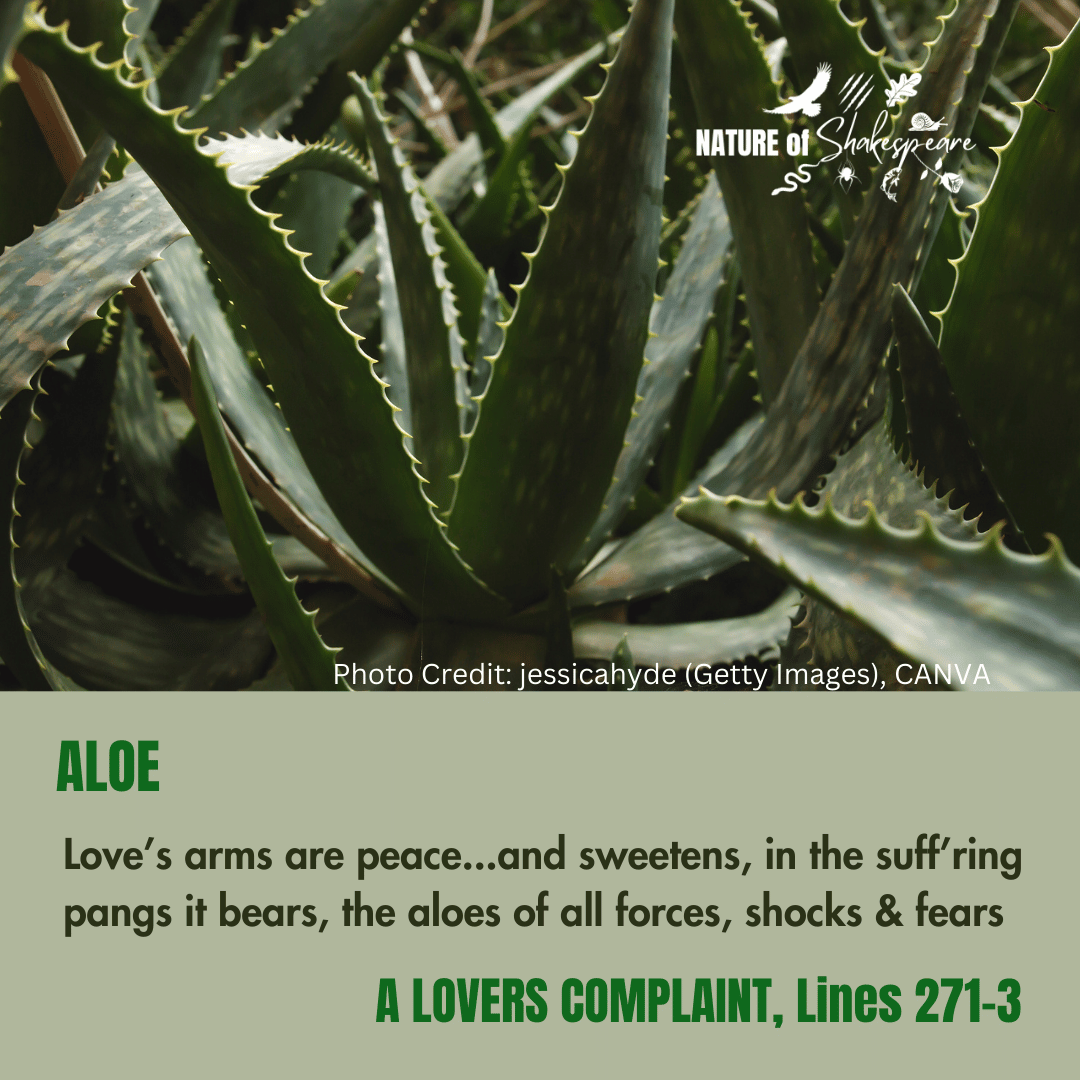
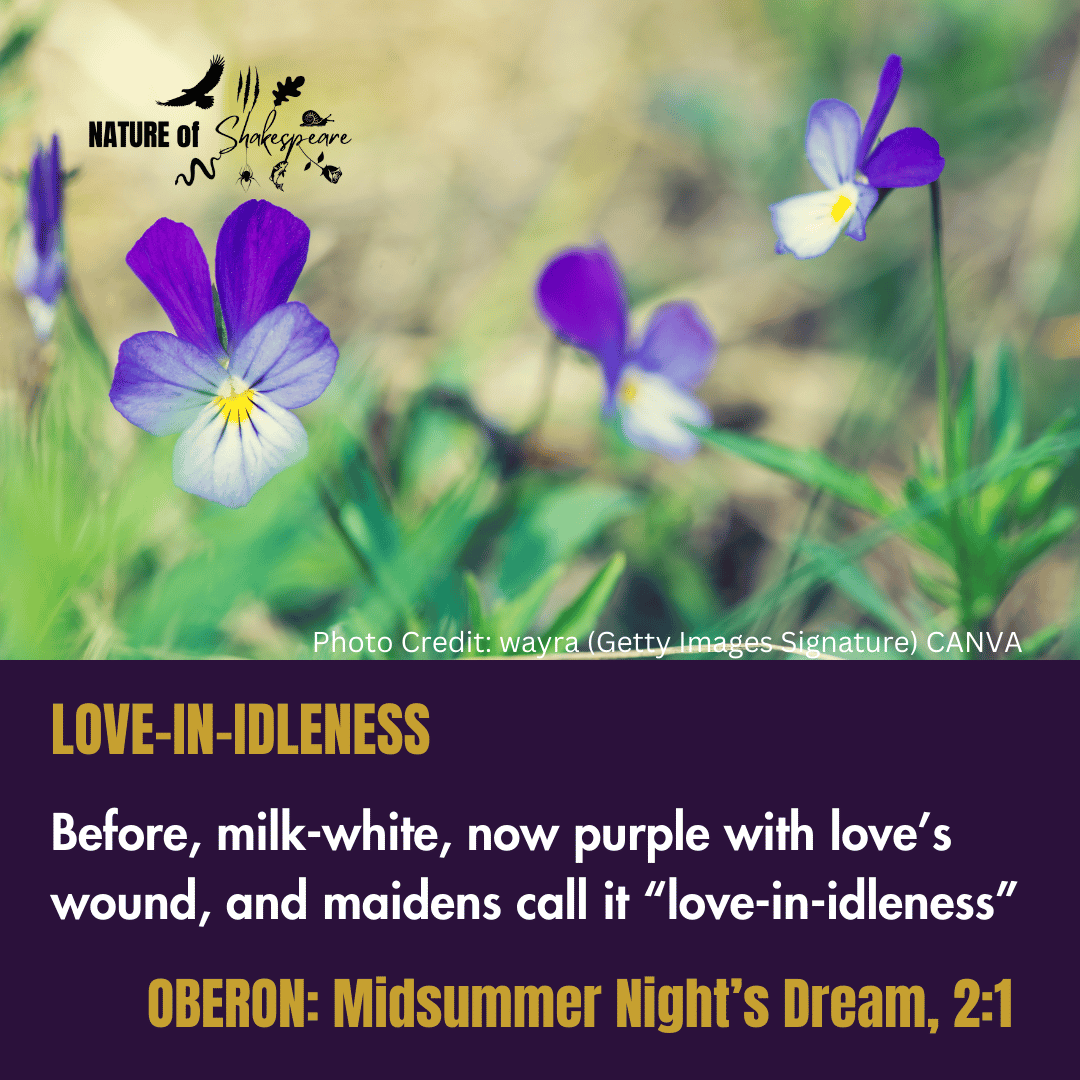
LOVE-IN-IDLENESS
Love-In-Idleness is mentioned in 2 plays in connection with its ability to induce love. The plant is also know as Heartsease or Wild Pansy.





GOOSEBERRY
Shakespeare Species Gooseberry: all the other gifts appurtentant to man… are not worth a gooseberry. Falstaff, the great giver and receiver of insults often uses nature based imagery.

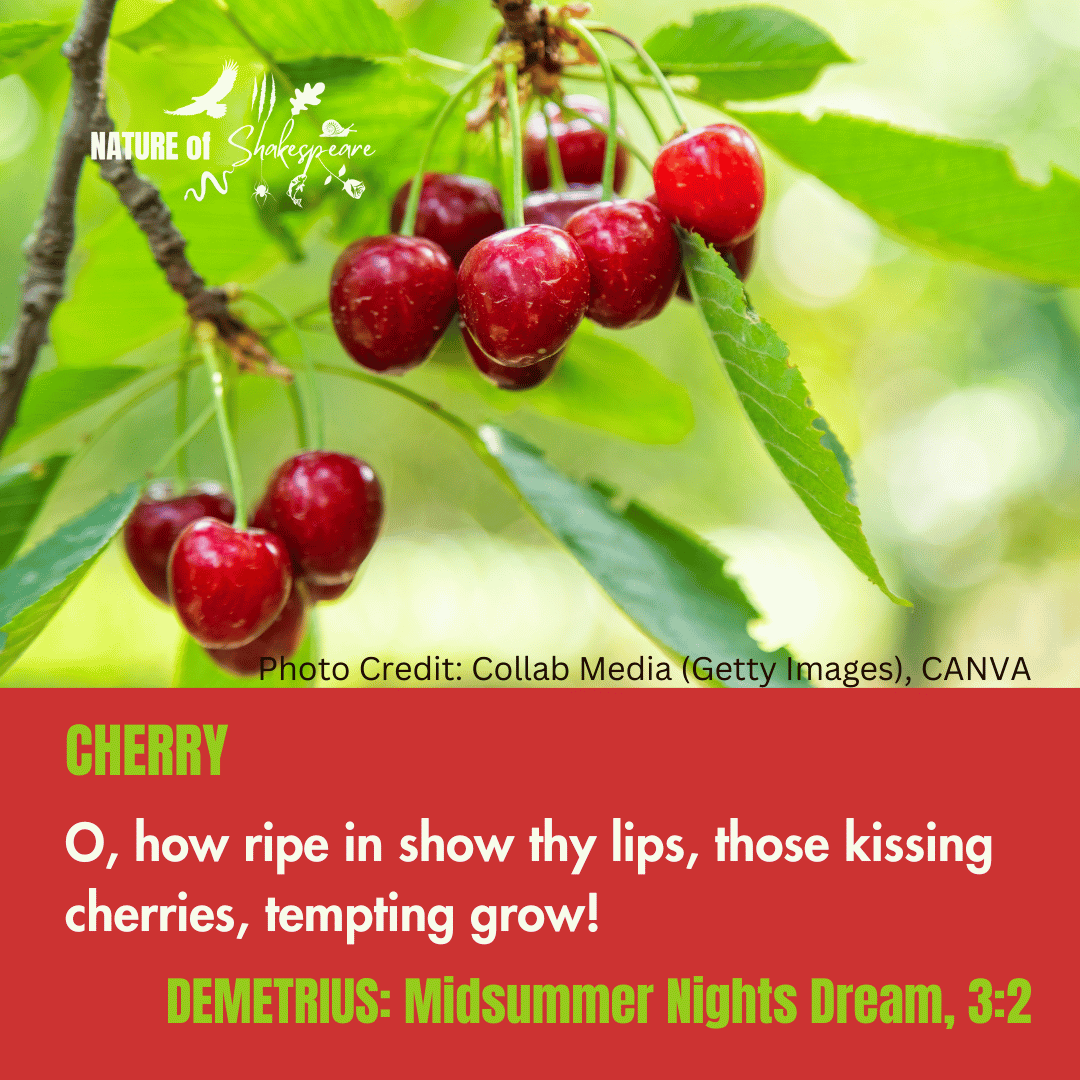

Fleur-de-luce
Shakespeare Species Quote of the Day, IRIS: have I a soul on which I’ll toss the fleur-de-luce of France. The heraldic symbol of France is based on an Iris. Introduced garden species of Iris such as Iris germanica were popular in Shakespeare’s time.

WILD THYME
Shakespeare Species Quote of the Day, WILD THYME: I know a bank where the wild thyme blows. The flower filled bank is the favourite bed of Titania, Queen of the Fairies. There are several wild Thyme species in the UK.

STRAWBERRY
Shakespeare Species Quote of the Day, STRAWBERRY: the strawberry grows underneath the nettle. The Bishop of Ely compares Prince Hal with the Strawberry and Falstaff with the Nettle, a dubious guard under which to flourish.




